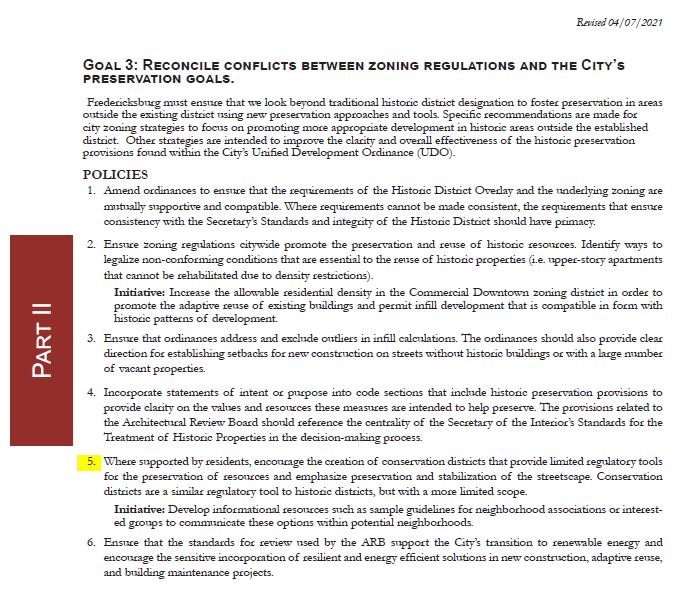What is a Neighborhood Conservation District?
A Neighborhood Conservation District (NCD) is a tool for zoning an area of special architectural or historic interest, the character or appearance of which it is desirable to preserve or enhance. The character or appearance of a conservation area is derived from a variety of factors, including the buildings and spaces within it.
As a planning tool, NCDs are used to protect the character and more modest scale of older historic neighborhoods facing increased development pressures and tear-downs. Modern construction is encouraged, if done thoughtfully in concert with older structures.
What can a Neighborhood Conservation District do?
NCDs are geared toward the conservation of the built environment. Thus, they are generally designed to:
- Identify what built and natural features have special value and meaning in a given area/neighborhood
- Increase awareness of the history and unique character of an area/neighborhood
- Limit demolition of buildings or built features identified as a contributing resource(s) within the area/neighborhood
- Support compatible infill and new development that fits in with the established area/neighborhood
What doesn’t a Neighborhood Conservation District do?
A NCD differs from the City’s Old and Historic District because it does not require City staff or Architectural Review Board (ARB) approval of all exterior alteration(s) visible from the public-right of way.
A conservation district solely requires City approval for:
- Demolition of primary building(s) that contributes to the historic character of the area/neighborhood
- New infill construction on open lots within the area/neighborhood
- Sizable additions and new buildings that will be visible from the public right-of-way
Model Example: Charlottesville, VA
State enabling legislation to allow neighborhood Conservation Districts in Charlottesville, Virginia (1994) – first efforts to create NCDs in the state?
City of Charlottesville: What is an Historic Conservation District? & Historic Conservation Districts Ordinance
Charlottesville’s Historic Conservation Districts Design Guidelines
A Charlottesville neighborhood’s proposal for Conservation District zoning: Martha Jefferson Proposal for a Historic Conservation District – Information Book (2010)
Why is the character of a neighborhood worth conserving?
The City of Fredericksburg has long acknowledged the crucial role its historic built environment plays in maintaining the economic well-being and unique sense of place within the community–in and outside the Old and Historic District. For the past 30 years, each Strategic and Comprehensive Plan has reaffirmed the economic, cultural, psychological, and environmental benefits of preserving and enhancing the community’s character.
The last two Comprehensive Plans (2015-2025 and the newly revised 2025 version) make clear how the City’s goals and best practices for a sustainable livable environment are interdependent and require a coordinated effort to achieve.
Chapter 7 of the City’s 2015-2025 Comprehensive Plan is dedicated to preserving what many older historic neighborhoods inherently possess:
- A walkable and densely developed area
- Visually attractive built environment
- Diverse types of housing
- Intermixture commercial properties
- Mature tree canopy and greenspace
- Accessible via various modes of transportation
City planning staff and professional consultants have discussed ways to help preserve Fredericksburg’s unique and distinct older neighborhoods. Some planning-zoning tools currently under consideration include creating Conservation Districts and “Neighborhood Pattern Books” to highlight and protect the traditional patterns of development that give each Fredericksburg neighborhood its own distinct character.
Older parts of the city exhibit architectural diversity, tree lined streets, and sidewalks, which are all features that define Fredericksburg’s character and contribute to its charm. Newer development, however, is often more typical of suburban communities, where the emphasis on automobile access sometimes comes at the expense of pedestrian safety
(City of Fredericksburg Comprehensive Plan [pre-May 2025], page 93).
————————————
Learn more about some of Fredericksburg’s older neighborhoods:
Brief history of College Terrace
Preliminary Evaluation of College Terrace’s Historic Significance and Integrity, Reviewed & Approved by the Virginia Department of Historic Resources (March 2025)
2012 Cultural Resource Survey of College Terrace & Hanover Heights neighborhoods by UMW Historic Preservation students
2021_Cultural Resource Survey of College Terrace neighborhood by UMW Historic Preservation students
Conservation District Flyer from College Terrace neighborhood residents
More from HFFI in support of creating NCD zoning in FXBG:
October 8, 2024: HFFI appeal to City Council in support of Conservation Districts as planning tool
April 8, 2025: HFFI’s Comments to Planning Commission voicing support for NCDs
May 27, 2025: HFFI’s Comments to City Council in support of grassroots efforts to establish NCDs
What has City staff presented about potential NCD zoning in FXBG?
January 1, 2021: Conceptual Character District, City of Fredericksburg Planning Staff
April 8, 2025: City Preservation Planner’s work session NCD zoning presentation to City Council
April 8,2025:_City Preservation Planner’s NCD presentation – text only
May 13, 2025: Pages 5-6 with updated text on NCD zoning from Adopted-Area-5-Small-Area-Plan
May 2025: Fredericksburg Forward Comprehensive Plan Survey Summary
A Look Back: What have past City plans said about preserving the historic character of older neighborhoods and potential for Conservation District zoning in FXBG?
2021 Revised Chapter 8: Historic Preservation  (p. 8-12, right)
(p. 8-12, right)
2017 Comprehensive Plan:  Historic Preservation Initiatives (pp. 112-113, below); also Appendix B, Action Plan (pp. 214-215)
Historic Preservation Initiatives (pp. 112-113, below); also Appendix B, Action Plan (pp. 214-215)
More about the impacts of Historic Preservation in your community:
Six Practical Reasons to Save Old Buildings
Why preservation? What are the benefits?
Measuring the Economic Impacts of Historic Preservation
Historic Preservation’s Response to the YIMBY Movement
Historic Preservation and Cluster-Based Economic Development
